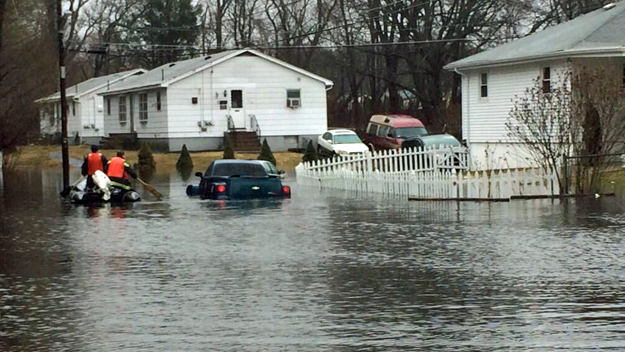In light of the recent heavy rains, many homeowners are finding themselves trying to deal with the aftermath of leaking windows and flooded living rooms. They are concerned about the health and safety of their families, and are wondering if they can dry their homes themselves, or if they need professional intervention.
In order to address these issues, we not only need to know where the water came from, but what did it pass through before it entered the structure. According to the IICRC S500 – Standard and Reference Guide for Professional Water Damage Restoration, rainwater by itself is considered Category 1 water, water with little or no contamination. If rainwater enters your home directly through the windows, or through a leak in your roof (as long as your roof is clean), it is possible to restore wet material to its original condition by the use of forced-air or open-air drying methods.
However, if the rainwater built up outside the house in the lawn or on the street, then made its way into the structure, this is now considered “rising flood water”, or Category 3 water. This water is deemed heavily contaminated, and any non-structural building material that absorbs such water should be removed from the home and discarded. Material such as carpet and padding, drywall, laminate flooring, and pressed-wood cabinets cannot be effectively decontaminated by cleaning methods, and therefore should be removed and disposed. In addition, it is necessary to access the structure behind or beneath these materials in order to decontaminate it properly. Once this process is complete, new finish materials can be installed.
Do you need a professional? Maybe. Professionals have the tools to inspect your home completely and locate any hidden or obscure areas of water damage. Contrary to popular belief, it is not possible to “feel” moisture in drywall, and in many cases the walls and wooden framing of a water damaged home can remain wet for weeks. It only takes a few days for microbial growth to begin, and for this reason it is very important to locate all water damaged areas and get them drying quickly.
In the case of a Category 3 loss, the restoration process is basically demolition, decontamination, and rebuilding. Keep in mind though, that once drywall and flooring are removed from the home, the framing and sub floor need to dry completely before installing new finish materials. If the structure is not dry, and new finish materials are installed, it is possible to trap moisture in these areas and this can lead to microbial growth and wood rot. In addition, Category 3 water is presumed contaminated, therefore it is critical to protect yourself when handling building materials and other water damaged items in this environment. Proper use of PPE (personal protective equipment) is required for your safety when demolishing and cleaning a Category 3 contaminated structure. If you do not feel comfortable doing this type of work safely, call a professional.
Lastly, and probably most importantly, investigate the cause of your water damage incident and address it properly and completely. Assume it is going to rain even harder the next time, and you want to protect your home from this type of damage in the future. If you are unsure of how to fix the problem, consult a general contractor, home inspector, or water damage restoration professional to get some opinions and ideas. In many cases, the solution to a water damage problem is multifaceted, and involving several professionals can be a great asset to the health, safety, and integrity of your home.



